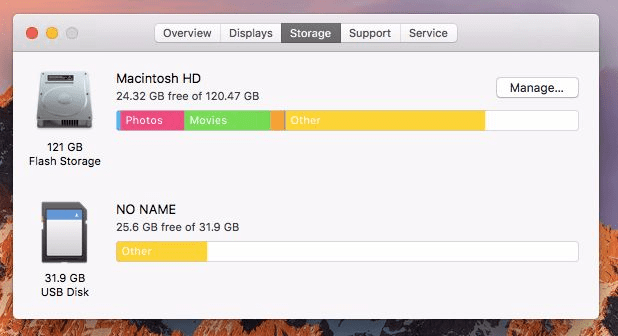I need help to clean up my MacBook Pro and its slowing down the speed. Can I erase an alias documents/files. I have an internet service at Verizon -FiOS Quantum Gateway and I am only connected to Wi-FI. Now I wanted to know step by step on how to Bind my Laptop to Active Directory Domain to have the whole network working.
- Clean Up Memory On Macbook Pro
- Clean Memory Macbook Pro
- How To Clean Memory In Mac
- Clean My Macbook Pro Free
- Clear Cache Memory Macbook Pro
- How To Clean Memory Macbook
- Clean Mac Pro
Optimized Storage helps you save storage space space by storing your content in iCloud and making it available on demand:
- When storage space is needed, files, photos, movies, email attachments, and other files that you seldom use are stored in iCloud automatically.
- Each file stays right where you last saved it, and downloads when you open it.
- Files that you’ve used recently remain on your Mac, along with optimized versions of your photos.
If you haven't yet upgraded to macOS Sierra or later, learn about other ways to free up storage space.
Find out how much storage is available on your Mac
Choose Apple menu > About This Mac, then click Storage. Each segment of the bar is an estimate of the storage space used by a category of files. Move your pointer over each segment for more detail.
Click the Manage button to open the Storage Management window, pictured below.
- Jun 13, 2020 Resetting the NVRAM can fix problems wherein your MacBook Pro isn't playing sound, the display is flickering or turning itself off, the computer is taking too long to start up, and similar problems. On some Macs, 'NVRAM' is replaced with 'PRAM' ('Parameter Random-Access Memory'), which is fundamentally similar to NVRAM.
- I also encountered the same problem with my brand new 16GB MacBook Pro Retina. When it starts using swap, you feel the sluggishness while using the system. The way I've been able to regain memory and snappiness is by using the 'purge' command in the terminal as root or by downloading and using the 'Memory clean' app from the App Store.
Manage storage on your Mac
Clean Up Memory On Macbook Pro
The Storage Management window offers recommendations for optimizing your storage. If some recommendations are already turned on, you will see fewer recommendations.
Store in iCloud
Click the Store in iCloud button, then choose from these options:
- Desktop and Documents. Store all files from these two locations in iCloud Drive. When storage space is needed, only the files you recently opened are kept on your Mac, so that you can easily work offline. Files stored only in iCloud show a download icon , which you can double-click to download the original file. Learn more about this feature.
- Photos. Store all original, full-resolution photos and videos in iCloud Photos. When storage space is needed, only space-saving (optimized) versions of photos are kept on your Mac. To download the original photo or video, just open it.
- Messages. Store all messages and attachments in iCloud. When storage space is needed, only the messages and attachments you recently opened are kept on your Mac. Learn more about Messages in iCloud.
Storing files in iCloud uses the storage space in your iCloud storage plan. If you reach or exceed your iCloud storage limit, you can either buy more iCloud storage or make more iCloud storage available. iCloud storage starts at 50GB for $0.99 (USD) a month, and you can purchase additional storage directly from your Apple device. Learn more about prices in your region.
Optimize Storage
Click the Optimize button to save space by automatically removing watched movies and TV shows. When storage space is needed, movies or TV shows that you purchased from Apple and already watched are removed from your Mac. Click the download icon next to a movie or TV show to download it again.
Your Mac will also save space by keeping only recent email attachments on this Mac when storage space is needed. You can manually download any attachments at any time by opening the email or attachment, or saving the attachment to your Mac.
Optimizing storage for movies, TV shows, and email attachments doesn't require iCloud storage space.
Empty Trash Automatically
Empty Trash Automatically permanently deletes files that have been in the Trash for more than 30 days.
Reduce Clutter
Reduce Clutter helps you identify large files and files you might no longer need. Click the Review Files button, then choose any of the file categories in the sidebar, such as Applications, Documents, Music Creation, or Trash.
You can delete the files in some categories directly from this window. Other categories show the total storage space used by the files in each app. You can then open the app and decide whether to delete files from within it.

Learn how to redownload apps, music, movies, TV shows, and books.
Where to find the settings for each feature
The button for each recommendation in the Storage Management window affects one or more settings in other apps. You can also control those settings directly within each app.
- If you're using macOS Catalina or later, choose Apple menu > System Preferences, click Apple ID, then select iCloud in the sidebar: Store in iCloud turns on the Optimize Mac Storage setting on the right. To turn off iCloud Drive entirely, deselect iCloud Drive.
- If you're using macOS Mojave or earlier, choose Apple menu > System Preferences, click iCloud, then click Options next to iCloud Drive. Store in iCloud turns on the Desktop & Documents Folders and Optimize Mac Storage settings.
- In Photos, choose Photos > Preferences, then click iCloud. Store in iCloud selects iCloud Photos and Optimize Mac Storage.
- In Messages, choose Messages > Preferences, then click iMessage. Store in iCloud selects Enable Messages in iCloud.

- If you're using macOS Catalina or later, open the Apple TV app, choose TV > Preferences from the menu bar, then click Files. Optimize Storage selects “Automatically delete watched movies and TV shows.”
- In you're using macOS Mojave or earlier, open iTunes, choose iTunes > Preferences from the menu bar, then click Advanced. Optimize Storage selects “Automatically delete watched movies and TV shows.”
- In Mail, choose Mail > Preferences from the menu bar, then click Accounts. In the Account Information section on the right, Optimize Storage sets the Download Attachments menu to either Recent or None.
Empty Trash Automatically: From the Finder, choose Finder > Preferences, then click Advanced. Empty Trash Automatically selects “Remove items from the Trash after 30 days.”
Other ways that macOS helps automatically save space
With macOS Sierra or later, your Mac automatically takes these additional steps to save storage space:
- Detects duplicate downloads in Safari, keeping only the most recent version of the download
- Reminds you to delete used app installers
- Removes old fonts, languages, and dictionaries that aren't being used
- Clears caches, logs, and other unnecessary data when storage space is needed
How to free up storage space manually
Even without using the Optimized Storage features described in this article, you can take other steps to make more storage space available:
- Music, movies, and other media can use a lot of storage space. Learn how to delete music, movies, and TV shows from your device.
- Delete other files that you no longer need by moving them to the Trash, then emptying the Trash. The Downloads folder is good place to look for files that you might no longer need.
- Move files to an external storage device.
- Compress files.
- Delete unneeded email: In the Mail app, choose Mailbox > Erase Junk Mail. If you no longer need the email in your Trash mailbox, choose Mailbox > Erase Deleted Items.
Clean Memory Macbook Pro
Learn more

- The Storage pane of About This Mac is the best way to determine the amount of storage space available on your Mac. Disk Utility and other apps might show storage categories such as Not Mounted, VM, Recovery, Other Volumes, Free, or Purgeable. Don't rely on these categories to understand how to free up storage space or how much storage space is available for your data.
- When you duplicate a file on an APFS-formatted volume, that file doesn't use additional storage space on the volume. Deleting a duplicate file frees up only the space required by any data you might have added to the duplicate. If you no longer need any copies of the file, you can recover all of the storage space by deleting both the duplicate and the original file.
- If you're using a pro app and Optimize Mac Storage, learn how to make sure that your projects are always on your Mac and able to access their files.
Firstly, the term 'memory' refers to your RAM, not your storage space. The space on your hard drive is called 'storage' space.
How To Clean Memory In Mac
Secondly, I'll assume you mean your hard drive:
Freeing Up Space on The Hard Drive
1. See Lion/Mountain Lion/Mavericks' Storage Display.

2. You can remove data from your Home folder except for the /Home/Library/ folder.
3. Visit The XLab FAQs and read the FAQ on freeing up space on your hard drive.
Clean My Macbook Pro Free
4. Also see Freeing space on your Mac OS X startup disk.
Clear Cache Memory Macbook Pro

5. See Where did my Disk Space go?.
Wps pdf to word converter crack download. WPS Office for Mac. WPS PDF to Word 40.3MB. WPS Office For Linux. WPS Data Recovery Master 5.5MB. WPS Office For Android. WPS PDF For Android. PDF Editor For Android. PDF Converter Pro For Android. WPS Fill & Sign For Android. Support Bulk Outputting and More Text Formats WPS Office PDF to DOC/DOCX Converter can convert and output back with one key. Moreover, a wide range of output file formats are supported, including RTF, Native DOC, MS Word-DOC, MS Word-DOCX.
How To Clean Memory Macbook
6. See The Storage Display.
You must Empty the Trash in order to recover the space they occupied on the hard drive.
Clean Mac Pro
You should consider replacing the drive with a larger one. Check out OWC for drives, tutorials, and toolkits.
Try using OmniDiskSweeper 1.8 or GrandPerspective to search your drive for large files and where they are located.
May 7, 2014 6:25 PM
